Q
Is the Honda CR-V good for long distance?
The Honda CR-V is a great SUV for long drives, especially performing exceptionally well on Malaysia's varied road conditions. Its 1.5-liter turbocharged engine delivers plenty of power along with good fuel efficiency, making it ideal for extended highway stretches. The suspension is tuned more for comfort, effectively absorbing road bumps and reducing driver fatigue during long journeys. The cabin is spacious, with ample rear legroom and a large trunk—perfect for family trips or hauling lots of luggage. The seats offer solid support and nice bolstering to keep everyone comfortable too. On top of that, the CR-V comes with Honda Sensing, which includes adaptive cruise control and lane-keeping assist—features that really boost safety and convenience on long drives. For Malaysian drivers, the CR-V’s reliability and easy maintenance are big pluses. The local dealer network is well-established, and parts are readily available—all important things to consider for road trips. If you often drive cross-state or go on long road adventures, the CR-V’s all-around performance is definitely trustworthy. Just remember to regularly check your tires and brakes to keep things safe out there.
Special Disclaimer: This content is published by users and does not represent the views or position of PCauto.
Related Q&A
Q
Can a Honda CR-V last 300,000 miles?
From experience and real-world cases, the Honda CR-V does have the potential to clock over 300,000 miles (around 480,000 kilometers), but this hinges entirely on the owner’s maintenance habits and driving conditions here in Malaysia. The CR-V is known for its reliable engines and durability, especially with the 1.5T turbocharged or 2.4L naturally aspirated powerplants. As long as you stick to regular maintenance like oil changes, transmission fluid swaps, and coolant replacements, and keep an eye on how the tropical climate affects rubber parts and electronics, hitting those high mileages is totally doable. Malaysia’s rainy and humid weather can speed up chassis rust, so I’d recommend regular inspections and rust-proofing treatments. Also, with the mixed local road conditions, shock absorbers and suspension components tend to wear faster and need more frequent replacement. For folks looking to buy a used CR-V, focus on checking the engine’s condition, how smooth the transmission shifts, and whether the body has any accident damage. It’s worth noting that any car reaching high mileage requires the owner to invest in proper upkeep—things like timely timing belt replacements and brake system checks are non-negotiable. Honda’s after-sales service network in Malaysia is pretty solid too, which is a big plus for long-term ownership.
Q
How many kilometers can a Honda CR-V last?
The Honda CR-V, a favorite SUV among Malaysian consumers, boasts impressive durability. With proper maintenance and care, it can easily clock over 250,000 kilometers or more. Many owners report their CR-Vs still maintain good mechanical condition and driving performance even after hitting the 200,000-kilometer mark. To maximize its lifespan, the key is to regularly change critical fluids like engine oil, transmission fluid, and brake fluid, promptly replace worn parts such as brake pads, tires, and belts, and stick to the manufacturer-recommended service intervals. Given Malaysia's hot and humid climate, it's advisable to pay extra attention to maintaining the cooling system and air conditioning system to prevent overheating and component corrosion caused by moisture. It's worth noting that the CR-V's engine and transmission technologies are mature and reliable, and its chassis structure can withstand various road conditions, making it perform exceptionally well in Malaysia's diverse driving environments. Additionally, Honda has an extensive dealer network in Malaysia with ample supply of genuine parts, which adds convenience for long-term ownership. If you're considering buying a used CR-V, prioritize vehicles with complete service records and pay special attention to inspecting the engine, transmission, and chassis conditions to better ensure the remaining service life of the vehicle.
Q
Are Honda CR-V cars reliable?
The Honda CR-V is widely recognized in the Malaysian market for its reliability and practicality. This SUV is equipped with the well-established Earth Dreams engine technology, delivering excellent fuel efficiency, while the CVT transmission is smooth and durable, making it suitable for both city driving and long journeys. The CR-V features a robust body structure and a comprehensive suite of safety equipment, such as the Honda SENSING intelligent driving assistance system, which effectively enhances driving safety. In Malaysia's tropical climate, the CR-V's air conditioning system and electronic components perform admirably with low failure rates. Additionally, Honda's after-sales service network in Malaysia is well-established, with ample parts supply, making maintenance relatively convenient and reasonably priced. It's worth noting that the CR-V holds a strong resale value, which is another testament to its market popularity. For family users, the CR-V offers flexible space layout, with the rear seats folding down to create a large storage area, perfectly suited to Malaysia's diverse automotive needs. Of course, any vehicle requires regular maintenance to ensure optimal performance, and owners are advised to follow the official maintenance manual.
Q
What is the mileage of Honda CR-V 2019?
The real-world fuel consumption of the 2019 Honda CR-V in the Malaysian market varies depending on powertrain configuration and driving conditions. The official test data for the 1.5-liter turbocharged petrol engine variant (a common local configuration) is approximately 7.5 to 8.2 liters per 100 kilometers, which translates to around 14-15 km per liter in urban driving and up to 18-19 km per liter on the highway. Actual performance will be affected by driving habits, road conditions, and maintenance status. It's worth noting that as a best-selling SUV, the CR-V's Earth Dreams turbo technology optimizes fuel efficiency through direct fuel injection and a CVT transmission. In Malaysia's hot climate, it's advisable to regularly check the air conditioning system and coolant, as these factors can indirectly impact fuel consumption. To further improve fuel economy, you can maintain proper tire pressure (about 220-230kPa), avoid sudden acceleration, and replace the original specified viscosity oil (such as 0W-20) on time, these details are important for keeping the vehicle in optimal condition.
Q
Is the Honda CR-V 1.5 turbo reliable?
The reliability of the Honda CR-V's 1.5 turbo engine in the Malaysian market is generally trustworthy. This engine features Honda's Earth Dreams technology, delivering ample power output along with good fuel efficiency, making it suitable for both local city driving and long-distance trips. Many owners report low failure rates during daily use and relatively reasonable maintenance costs. However, turbocharged engines have higher maintenance requirements compared to naturally aspirated ones. It's advisable to regularly replace high-quality engine oil and strictly follow the manufacturer's maintenance schedule to ensure long-term stable engine operation. For Malaysia's hot and rainy climate, the CR-V's cooling system and electronic components have been specifically tuned to adapt to local conditions. It's worth noting that turbocharging technology has become a mainstream trend in the automotive industry today. It not only provides stronger power from smaller displacements but also reduces fuel consumption. However, owners should avoid immediately shutting off the engine after prolonged high-rev driving to protect the turbocharger's lifespan. If considering a used CR-V 1.5T, it's recommended to focus on checking the turbo system's condition and maintenance records to ensure the vehicle remains in good working order.
Q
How far can a Honda CR-V go on a full tank?
According to official Honda CR-V specs, the fuel tank holds about 58 liters. Actual range depends on the trim and driving conditions, but generally, the 1.5L turbo model gets around 7.5L/100km combined, so you’re looking at roughly 770km per fill-up. The hybrid version is even thriftier at about 5.5L/100km, pushing range up to around 1050km. Of course, real-world range varies—your driving style, road conditions, and how much weight you’re hauling all play a part. Highway cruising at a steady speed will be more efficient, while stop-and-go city traffic will drink more fuel. For Malaysian drivers, the hot weather means AC is cranked most of the time, which can nudge fuel consumption up a bit. To keep things efficient, regular maintenance is key—check your tire pressure and oil condition regularly. And let’s not forget: planning your route smartly and avoiding aggressive acceleration or hard braking can also help stretch that tank a little further.
Q
Should I buy a high mileage Honda CR-V?
Buying a high-mileage Honda CR-V requires considering factors like condition, maintenance history, and price. As a generally reliable SUV, the CR-V's engine and transmission can hold up well even with higher miles if properly maintained. However, it's crucial to check for excessive wear on the chassis, suspension, and drivetrain—especially since Malaysia's rainy climate can cause chassis corrosion issues. In the Malaysian market, used CR-Vs hold their value relatively well, so a high-mileage one can still be a solid pick if priced right and in good shape. Just make sure the seller provides full service records and arrange for a professional mechanic to inspect it. Also, the CR-V stands out for fuel efficiency and practical space among its class, making it great for families. But higher-mileage units may need more frequent upkeep, so budget for replacing wear items like shocks, tires, and the timing belt. If your budget allows, compare with lower-mileage used CR-Vs or other brands in the same segment to ensure you get the best fit.
Q
How often should I oil change my Honda CR-V?
According to Honda Malaysia's official recommendations, the oil change interval for the Honda CR-V is typically every 6 months or 10,000 kilometers, whichever comes first. This standard applies when using the factory-recommended fully synthetic engine oil. If mineral oil or semi-synthetic oil is used, the interval may need to be shortened to every 5,000 kilometers or 6 months – always best to check your vehicle's owner's manual or consult your local Honda dealership for specifics.
Malaysia's hot and humid climate, combined with frequent short trips or prolonged idling (think city traffic jams), can cause oil to degrade faster. So, it's a good idea for owners to regularly check both the color and level of their engine oil. If you notice the oil has turned black or its viscosity has dropped significantly, don't wait for the recommended mileage – go ahead and get it changed early.
What's more, if you regularly drive under high loads or tough conditions – like mountain roads or gravel tracks – you might want to consider shortening those service intervals a bit. Using high-quality oil and genuine Honda filters can also do wonders for extending your engine's lifespan.
Remember, sticking to regular oil changes isn't just about keeping your engine performing at its best. It also helps improve fuel efficiency and reduce emissions, which aligns with Malaysia's environmental regulations. Skimping on maintenance could lead to increased carbon buildup or even void your warranty – definitely not worth the risk.
And a special note for turbocharged CR-V owners (like the 1.5L VTEC Turbo): those engines run hotter, so it's even more crucial to stick strictly to the recommended service schedule to ensure proper lubrication of the turbocharging system.
Q
How does the 2019 CR-V handle in snow?
How the 2019 Honda CR-V handles in the snow really comes down to its drivetrain setup and the tires you’re rolling on. This SUV comes in both front-wheel drive and all-wheel drive variants. The Real Time AWD system does a solid job of automatically shifting torque to the rear wheels when needed, which definitely helps with traction on snowy surfaces. But let’s be clear – this isn’t a hardcore off-roader. It’s much more at home tackling light snow cover or slick roads rather than deep powder.
If you’re planning on driving in the snow regularly, swapping out for winter tires is a smart move. The stock all-season tires tend to harden up in cold temperatures, and that can definitely take a toll on braking performance and overall handling.
For our readers in Malaysia, sure, snow driving might not be part of your daily routine, but getting the lowdown on these features still comes in handy. Whether you’re renting a car abroad or using a CR-V in a colder climate, this info helps you prep properly. Plus, tech like the Vehicle Stability Assist (VSA) and Hill Start Assist isn’t just for snow – they’re super useful for boosting safety on slippery roads during Malaysia’s rainy season too.
And hey, no matter how fancy the tech is, if you hit extreme weather, slowing down and avoiding sudden braking or sharp turns are still the golden rules for staying safe out there.
Q
What is the fuel pump problem on a 2019 Honda CR-V?
The 2019 Honda CR-V fuel pump issue primarily affects certain vehicles where a manufacturing defect in internal fuel pump components could lead to sudden engine stalling while driving or failure to start. Honda did issue a recall notice for this problem. Malaysian owners experiencing symptoms like reduced acceleration power, rough idling, or an illuminated check engine light should contact an authorized service center promptly for inspection. If necessary, replacing the fuel pump with the updated component is recommended to eliminate the potential hazard.
As a critical component that delivers gasoline from the tank to the engine, the fuel pump's reliability directly impacts driving safety. During regular maintenance, a basic assessment can be done by checking fuel pressure and listening for any unusual noises from the pump. Additionally, Malaysia's hot and humid climate can accelerate the aging of rubber seals. Owners are advised to adhere to the official maintenance schedule and use high-quality fuel to minimize the risk of fuel system failures.
If your vehicle is part of the recall, Honda Malaysia will provide free repair services. Owners can also check their vehicle's recall status by entering the VIN on the official website.
Latest Q&A
Q
Is the 2021 Toyota Yaris a good car?
The 2021 Toyota Yaris is a great fit for the Malaysian market as an affordable compact car. It's known for being fuel-efficient, reliable, and cheap to maintain. Under the hood, there's a 1.5-liter four-cylinder engine that delivers smooth power and excellent fuel economy, making it perfect for city driving. Its compact size also makes it super easy to maneuver through Malaysia's crowded streets and squeeze into tight parking spots. The interior space, while not overly spacious, is more than enough for daily use, and the trunk capacity meets family needs too. Safety-wise, it comes with 7 airbags and Toyota Safety Sense, which includes pre-collision systems and lane-keeping assist—great value for the money. If you're on a budget but want a dependable Japanese car, this is a solid pick. It's also worth mentioning that Toyota has a really strong after-sales service network in Malaysia, so repairs and maintenance are hassle-free with plenty of parts available, keeping long-term costs low. Plus, it holds its value well compared to rivals and does good in the used car market. If practicality and economy are your top priorities, the 2021 Yaris is definitely worth checking out.
Q
How much is Yaris 2021 in Saudi Arabia?
The 2021 Toyota Yaris in Saudi Arabia ranges in price from approximately 55,000 to 75,000 Saudi Riyals depending on the trim and configuration (around 68,000 to 93,000 Malaysian Ringgit, with exchange rates subject to fluctuation). This car focuses on affordability and reliability in the local market, making it ideal for city commuting. It's powered by a 1.5-liter four-cylinder engine and offers a choice of manual or CVT transmission. For Malaysian consumers, while the Saudi-market Yaris might have slightly different specs compared to the local version, the overall design philosophy is similar, including standard safety features like anti-lock braking systems and multiple airbags. It's worth noting that cross-border car purchases also involve import taxes, shipping costs, and local certification fees. If you're planning to buy a Yaris in Malaysia, it's better to check quotes directly with local dealers. The Southeast Asian variant is typically optimized with cooling systems and suspension tuning for tropical climates and road conditions, potentially offering better value for your specific needs.
Q
What is the price of Yaris 2021 in Malaysia?
The 2021 Toyota Yaris has different prices in Malaysia depending on the variant. The base 1.5J MT starts at around RM 70,000, while the top-spec 1.5V goes for approximately RM 88,000. Actual prices may vary due to regional promotions or optional extras. Under the hood, it’s powered by a 1.5-liter Dual VVT-i engine, churning out 106 horsepower and 140 Nm of torque, paired with a 7-speed CVT transmission. It delivers solid fuel efficiency, making it perfect for city driving. Safety-wise, the 2021 Yaris comes well-equipped across the range, with standard VSC (Vehicle Stability Control) and 7 airbags. Higher trims add convenient features like smart keyless entry and LED headlights. It’s worth noting that the Yaris in Malaysia is the ASEAN-spec version imported from Thailand, which has slight design and equipment tweaks compared to the Japanese domestic model—think a cooling system better suited for tropical climates and enhanced rust protection. Shoppers should also check out Toyota Malaysia’s official 5-year unlimited mileage warranty, which helps keep long-term ownership costs in check. Key rivals in its segment include the Honda City and Nissan Almera, so it’s a good idea to test drive them all to compare handling and interior space before deciding.
Q
What are the common problems with the 2021 Yaris?
The 2021 Toyota Yaris has generally proven reliable in the Malaysian market, though some owners have reported a few common issues. For instance, the CVT transmission occasionally exhibits slight jerking at low speeds – a typical tuning characteristic of small-displacement turbo engines paired with CVTs, which can be mitigated by regularly replacing the original transmission fluid. Additionally, users note that rear seat space feels a bit tight for passengers over 175cm tall, a common design trade-off in B-Segment models. Notably, some early production units experienced touchscreen lag in the infotainment system; this can be resolved by visiting an authorized service center for a free software update. From a maintenance standpoint, given Malaysia's hot climate, it's advisable to inspect the air conditioning compressor belt every 20,000 kilometers, a precaution relevant to Southeast Asia's high-temperature, high-humidity environment. Overall, the car retains Toyota's renowned low failure rate advantage, with its 1.5L Dual VVT-i engine adapting well to local fuel quality – daily use only requires following the manual's maintenance schedule. For consumers considering a used model, focus on checking the front wheel bearings and brake booster, as these components are more likely to need replacement after five years of ownership, though repair costs remain reasonable for the segment.
Q
What is the ground clearance of Harrier 2021?
The 2021 Toyota Harrier offers a ground clearance of approximately 190mm in the Malaysian market, a design that balances urban driving comfort with light off-road needs, making it suitable for the country's diverse road conditions. As a mid-size SUV, the Harrier's ride height sits between sedans and traditional off-roaders, ensuring chassis safety when tackling speed bumps or rough surfaces while maintaining a lower center of gravity for improved high-speed stability. It's worth noting that ground clearance can vary slightly based on vehicle load or optional components like sport kits, so owners should regularly check the chassis height to ensure optimal performance. Rivals in the same segment, such as the Honda CR-V or Mazda CX-5, typically have ground clearance ranging from 185mm to 210mm. The Harrier's setup leans more toward on-road driving refinement, though adding a chassis skid plate is advisable for frequent gravel road use. Malaysia's rainy climate also benefits from the higher ground clearance, enhancing water-wading capability, but drivers should note the manufacturer's specified maximum wading depth of 500mm and avoid risky attempts in deep water.
View MoreRelated News
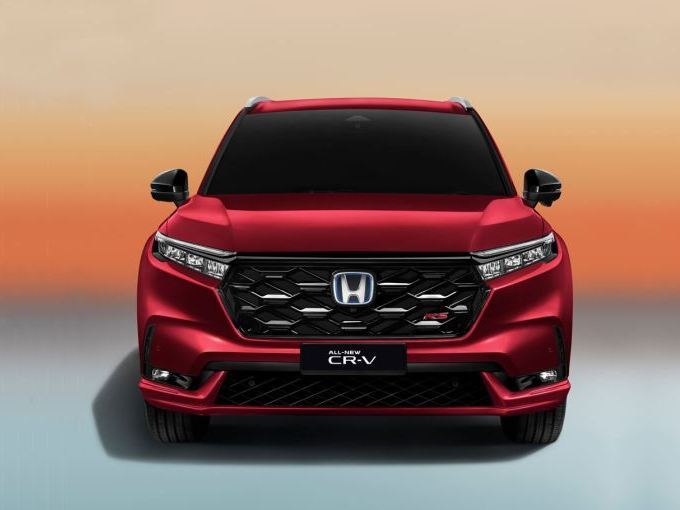
Honda CR-V: 1.5L Turbo or 2.0L Hybrid - Which One Is Right for You?
JamesJun 18, 2025
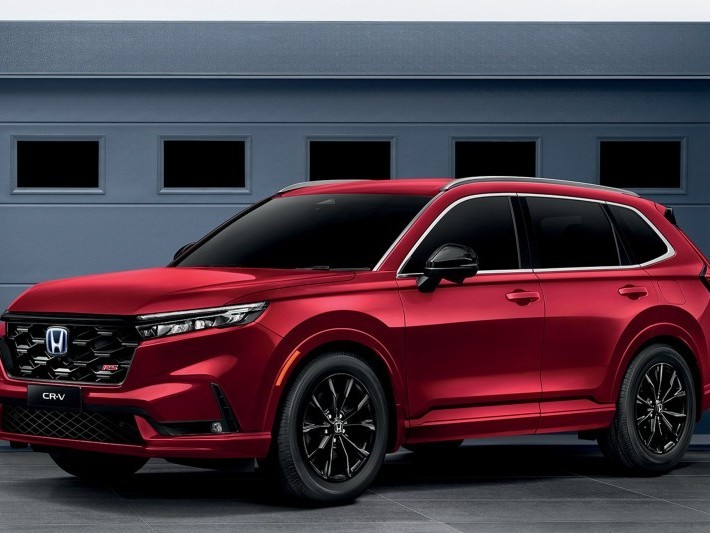
Smart Choice: Honda CR-V - Unbeatable Value, Worry-Free Driving
MichaelApr 11, 2025
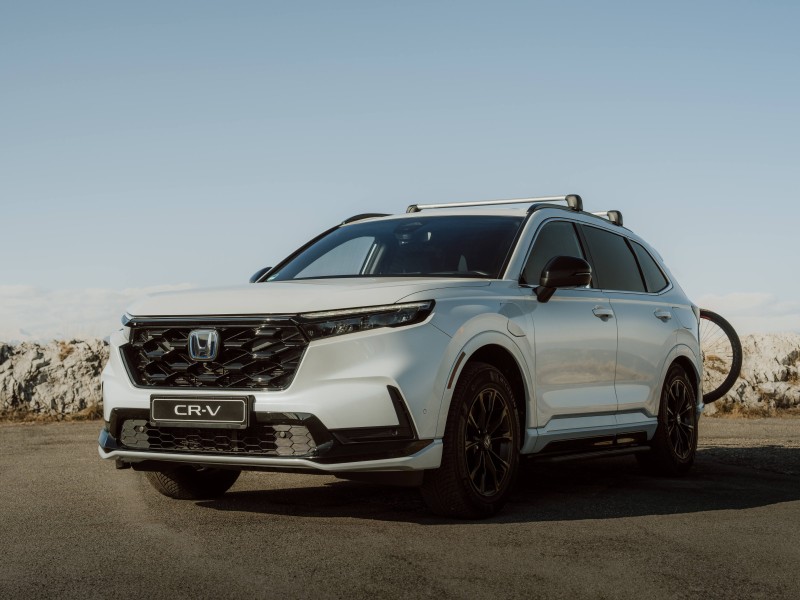
CR-V 30th Anniversary Edition Debuts in Europe: Camp-Ready Interior Takes Center Stage!
JamesApr 9, 2025
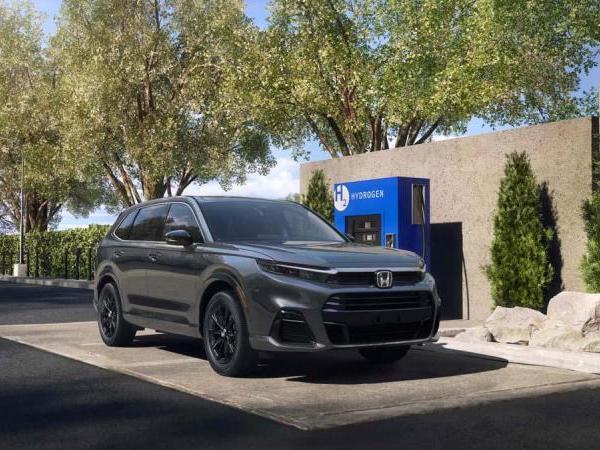
Honda CR-V e: FCEV Makes its Debut, Capable of Utilizing Hydrogen for Charging
Kevin WongMar 11, 2024

Honda N-ONE e: Officially launched in the Japanese market, with a range of 295 kilometers
AshleySep 12, 2025
View More



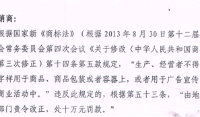







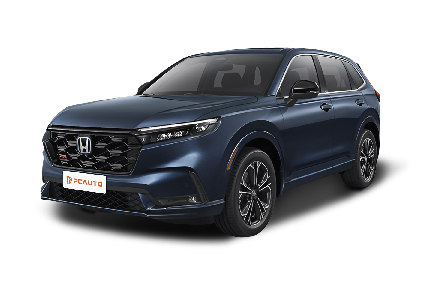
 Cars
Cars




Pros
Cons